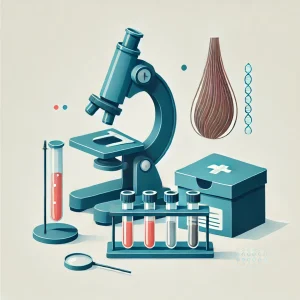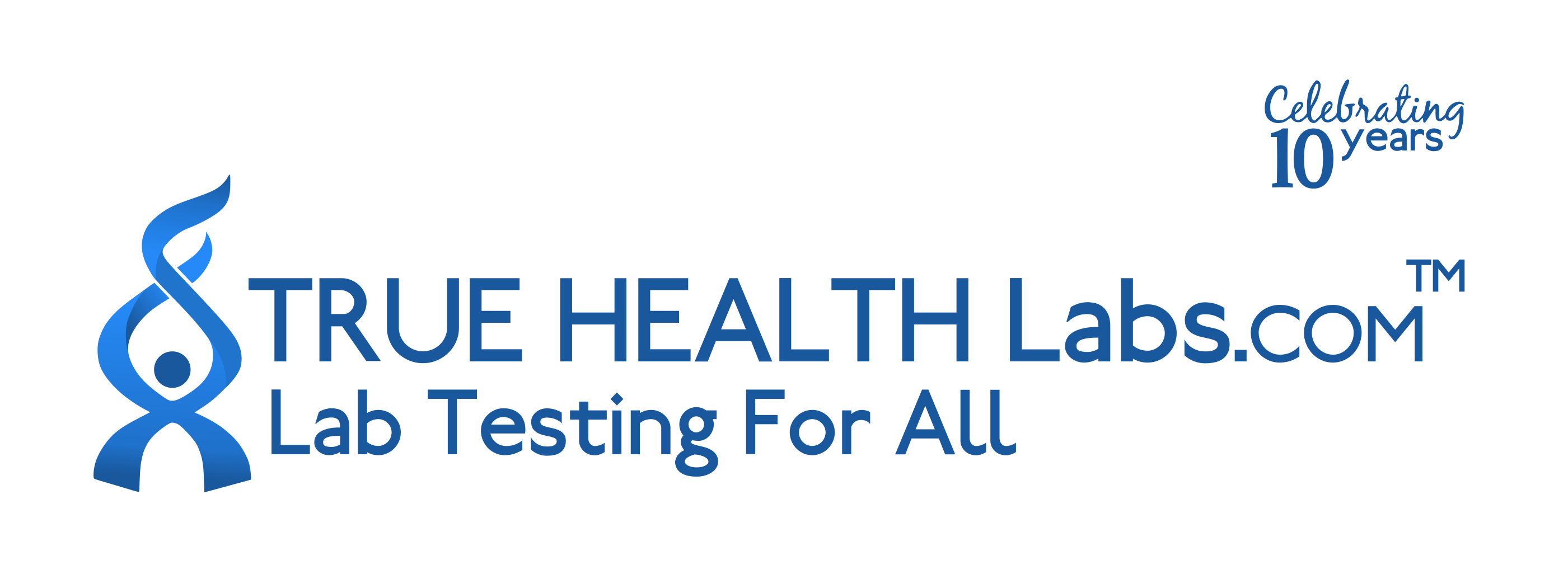What is the Trace Elements Hair Mineral / Toxic Analysis?

The Trace Elements Hair Mineral Analysis is a non-invasive test that measures over 30 essential and toxic minerals from a small hair sample. It goes beyond blood and urine tests to reveal mineral imbalances and exposure to harmful toxins that accumulate in the body over time. For example, did you know hair is a unique tissue that reflects long-term exposure to trace elements like aluminum and toxic elements like lead, arsenic, and cadmium?
Why is the Trace Elements Hair Mineral Analysis Important?
Understanding your mineral levels is important for unexplained health issues. A deficiency in magnesium, for instance, can disrupt sleep and muscle function, while high levels of arsenic might point to environmental toxin exposure. Each marker tells a story about your nutrition, metabolism, and potential toxin burden, offering insights you can’t get from other standard blood tests.
Why Should You Consider Ordering the Trace Elements Hair Analysis?
If you’re dealing with fatigue, or unexplained symptoms, this test can be a game-changer. Elevated levels of mercury, often linked to seafood consumption, can quietly affect your nervous system. Detecting these imbalances early helps you take actionable steps toward wellness and vitality. Don’t let hidden imbalances hold you back from restoring your health.
- Comprehensive testing for 30+ minerals, both essential and toxic.
- Personalized recommendations to address imbalances (add-on)
- Conveniently collect your hair sample from home.
Labs Included in Your Hair Mineral Analysis Order
Hair Minerals
| Test Name | Reference Ranges | Biomarker Significance | Low and High Levels |
|---|---|---|---|
| Calcium | Adults: 200-600 mg/kg | Essential for bone health and muscle function. | High: May indicate hyperparathyroidism or vitamin D excess.
Low: Could signal deficiency or malabsorption. |
| Magnesium | Adults: 25-75 mg/kg | Supports nerve function and energy production. | High: Suggests kidney dysfunction.
Low: Can cause cramps or irregular heartbeat. |
| Sodium | Adults: 200-400 mg/kg | Regulates fluid balance and nerve function. | High: May lead to hypertension.
Low: Can cause confusion or seizures. |
| Potassium | Adults: 100-200 mg/kg | Crucial for heart and muscle function. | High: Can result in cardiac arrhythmias.
Low: May cause muscle weakness. |
| Copper | Adults: 10-30 mg/kg | Important for iron metabolism and neurological health. | High: Indicates potential Wilson’s disease.
Low: Leads to anemia and neurological issues. |
| Zinc | Adults: 150-250 mg/kg | Vital for immune function and wound healing. | High: Can impair immune response.
Low: Results in delayed healing and susceptibility to infections. |
| Phosphorus | Adults: 100-200 mg/kg | Key component of bones and teeth. | High: May cause organ damage.
Low: Leads to muscle weakness. |
| Iron | Adults: 5-25 mg/kg | Essential for oxygen transport in blood. | High: Suggests hemochromatosis.
Low: Causes anemia and fatigue. |
| Manganese | Adults: 0.2-1.0 mg/kg | Involved in bone formation and energy metabolism. | High: Can lead to neurological issues.
Low: May impair growth and metabolism. |
| Chromium | Adults: 0.1-0.5 mg/kg | Enhances insulin action and glucose metabolism. | High: Might cause skin irritation.
Low: Leads to impaired glucose tolerance. |
| Selenium | Adults: 0.5-1.5 mg/kg | Protects cells from oxidative damage. | High: Results in selenosis.
Low: Increases risk of heart disease. |
| Cobalt | Adults: 0.01-0.1 mg/kg | Component of vitamin B12, vital for red blood cell production. | High: May cause cardiomyopathy.
Low: Leads to anemia. |
| Germanium | Adults: 0.01-0.1 mg/kg | May have antioxidant properties and support immune health. | High: Could cause kidney damage.
Low: Currently, no known deficiencies are clinically relevant. |
| Molybdenum | Adults: 0.03-0.15 mg/kg | Supports enzyme functions related to detoxification. | High: May impair copper metabolism.
Low: Can lead to developmental delays. |
| Sulfur | Adults: Normal range varies | Plays a role in protein synthesis and detoxification. | High: May cause mild digestive upset.
Low: Associated with joint pain or brittle nails. |
| Rubidium | Adults: 1-5 mg/kg | A trace element with potential effects on neurotransmitter activity. | High: Could alter nerve function.
Low: Not well-documented clinically. |
| Lithium | Adults: 0.05-0.2 mg/kg | Essential for neurological health at low levels. | High: May cause toxicity with neurological symptoms.
Low: Could be linked to mood imbalances. |
| Nickel | Adults: 0.05-0.2 mg/kg | A trace metal with potential allergenic properties. | High: Can cause dermatitis or allergic reactions.
Low: Not clinically significant. |
| Strontium | Adults: 1-10 mg/kg | Important for bone health but toxic at high levels. | High: May affect bone development negatively.
Low: Rarely a concern. |
| Tin | Adults: 0.01-0.1 mg/kg | A trace metal with industrial toxicity concerns. | High: Can cause gastrointestinal distress.
Low: Not clinically significant. |
| Vanadium | Adults: 0.01-0.05 mg/kg | May play a role in glucose metabolism at trace levels. | High: Can interfere with cellular functions.
Low: Minimal clinical relevance. |
Hair Toxic Elements
| Test Name | Reference Ranges | Biomarker Significance | Low and High Levels |
|---|---|---|---|
| Uranium | Adults: <0.05 mg/kg | A toxic element linked to kidney damage at high levels. | High: Can lead to kidney and bone issues.
Low: No known health concerns. |
| Arsenic | Adults: <0.01 mg/kg | Highly toxic and linked to cancer risk. | High: Indicates potential exposure to contaminated water or food.
Low: No clinical significance. |
| Beryllium | Adults: <0.001 mg/kg | Toxic metal associated with lung diseases. | High: May cause lung inflammation.
Low: No clinical concerns. |
| Mercury | Adults: <0.03 mg/kg | A neurotoxin that can impair brain function. | High: Linked to seafood consumption or industrial exposure.
Low: Not clinically significant. |
| Cadmium | Adults: <0.01 mg/kg | Toxic heavy metal affecting kidneys and lungs. | High: May result from smoking or industrial exposure.
Low: No clinical significance. |
| Lead | Adults: <0.02 mg/kg | Highly toxic, affecting neurological and developmental health. | High: Indicates exposure to old paint, water pipes, or contaminated soil.
Low: Not clinically significant. |
| Aluminum | Adults: <0.01 mg/kg | Associated with neurotoxicity at elevated levels. | High: Suggests environmental exposure to aluminum sources.
Low: No clinical concerns. |
| Barium | Adults: <0.001 mg/kg | Toxic in high concentrations, affecting heart and nerves. | High: Exposure to industrial waste or contaminated food.
Low: No known concerns. |
| Bismuth | Adults: <0.01 mg/kg | Used in some medications but toxic at high levels. | High: May cause kidney damage or neurological issues.
Low: Not clinically significant. |
| Platinum | Adults: <0.01 mg/kg | Used in cancer therapies but toxic in environmental exposure. | High: May indicate industrial exposure.
Low: Not clinically relevant. |
| Thallium | Adults: <0.005 mg/kg | A highly toxic metal affecting the nervous system. | High: Linked to poisoning from industrial exposure.
Low: No clinical relevance. |
| Titanium | Adults: <0.01 mg/kg | Commonly used in medical devices, low toxicity. | High: May reflect environmental exposure.
Low: No known health effects. |
| Tungsten | Adults: <0.01 mg/kg | Toxic at high levels, may affect kidneys. | High: May cause kidney or neurological issues.
Low: No known health impact. |
| Zirconium | Adults: <0.01 mg/kg | Low toxicity, used in medical applications. | High: Reflects industrial exposure.
Low: Not clinically relevant. |
According to PubMed, hair analysis provides unique insights into chronic exposure to elements, offering a window into long-term nutritional and environmental health.
Trace Elements Hair Analysis FAQ
What is the Trace Elements Hair Analysis for?
This test helps identify mineral imbalances and exposure to harmful toxins, offering insights into your body’s long-term nutritional and environmental health.
What are the signs and symptoms of mineral imbalances?
Symptoms can include fatigue, headaches, difficulty concentrating, muscle cramps, or unexplained mood changes. Toxic levels of elements like lead can cause more serious health issues.
How often should I retest?
It’s recommended to retest every 3-6 months to monitor changes in mineral levels and track your progress after implementing health interventions.
How accurate is the test?
The Trace Elements Labs Hair Analysis is highly accurate when samples are collected and handled properly. Laboratory processes ensure reliable results.
What’s the Difference Between Hair, Blood, and Urine Heavy Metal Tests?
Hair Testing:
- Reflects heavy metals accumulated in hair over weeks or months.
- Ideal for assessing long-term exposure, such as over the past few months.
- Less effective for detecting recent exposure since hair grows slowly.
- Identifies heavy metals currently present in the bloodstream.
- Best for detecting recent or short-term exposure, like within the last few days or weeks.
- Metal levels decrease quickly as they leave the blood and are stored in tissues.
- Shows the heavy metals your body is excreting.
- Helpful for identifying ongoing exposure or the body’s removal process.
- Can also reveal levels after using substances that release metals from tissues (provoked testing).
- Shows heavy metals being eliminated through the digestive tract.
- Can help identify gastrointestinal excretion patterns but may not reflect total body burden.
- Results can vary due to diet, digestion, and how metals are processed by the body.
- Less commonly standardized compared to blood or urine tests, making interpretation more complex.
Are test results private and confidential?
Receive test results securely on TrueHealthLabs.com under “My Account.” It’s critical that you share them with your physician. Results may be disclosed to health authorities only if legally mandated. Review our privacy policy for more details.
Important Notes:
- This test cannot be used with colored hair.
- This test is not eligible for results consultation.
- See the sample report for exact reference ranges.
Medical Review Board
Reviewed by Jeff Donohue M.D. from Body Logic and Brady Hurst DC, CCCN. Written by True Health Lab’s team of editorial health contributors.
Disclaimer: This information is for educational purposes only and not intended as medical advice. Consult your healthcare provider for personalized guidance.
Why Customers Trust True Health Labs – What People are saying
Also rated 4.6 out of 5 based on 3452 ShopperApproved reviews- See all TrueHealthLabs.com reviews.





